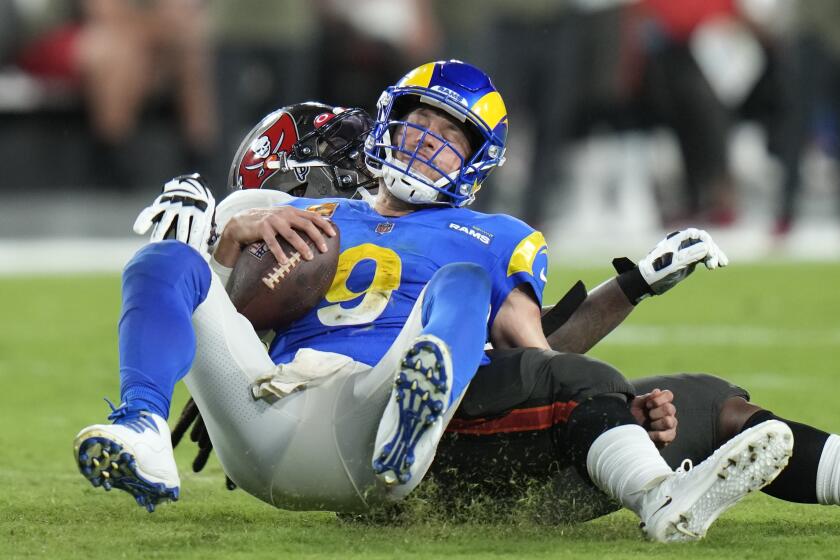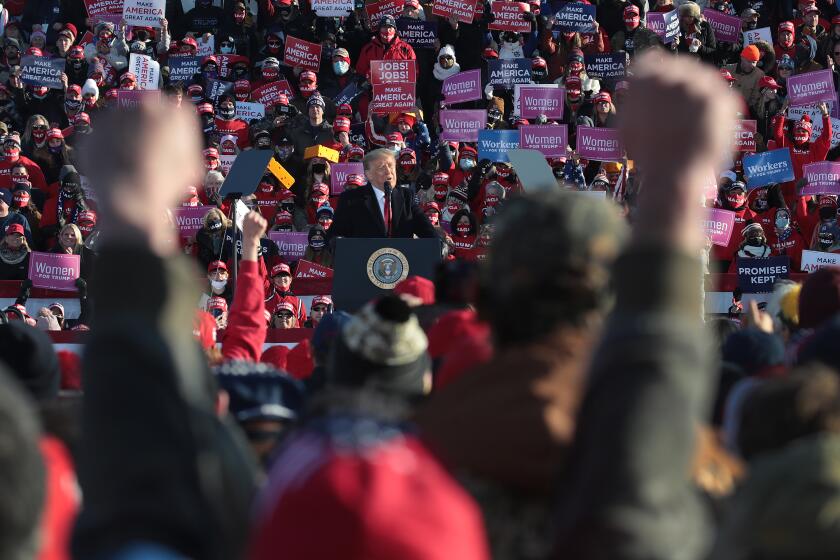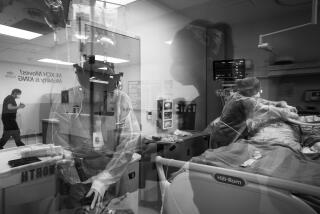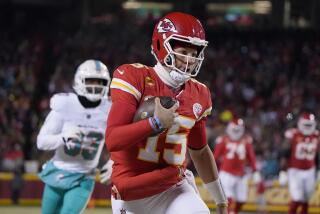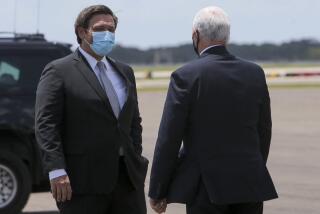NFL games during 2020 season led to significant COVID spikes, study says
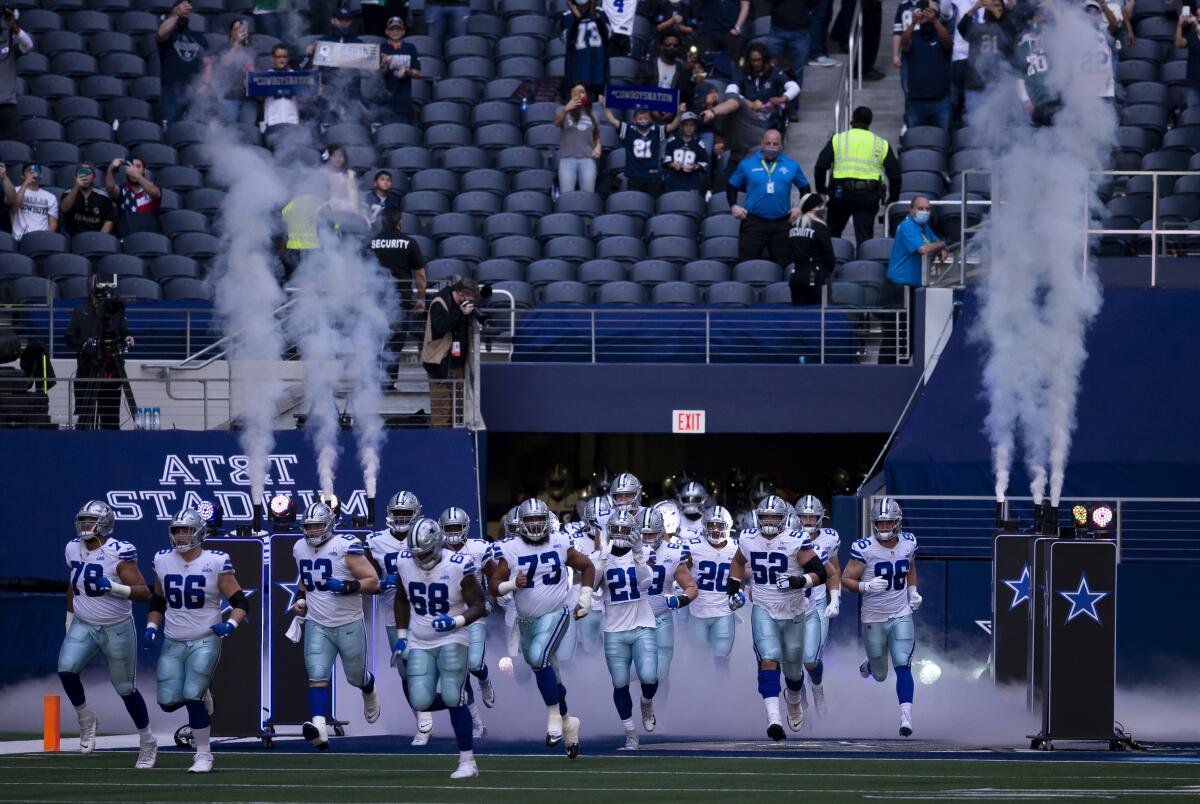
- Share via
As the NFL sought to resume play during the early months of the COVID-19 pandemic, with some teams choosing to allow fans into stadiums, league officials insisted that football crowds had no negative impact on public health.
“We’re proud of that,” Commissioner Roger Goodell said at the time, “and we’re going to build on that.”
But newly published research suggests that even at significantly reduced capacity, stadiums with 20,000 or more in attendance were associated with subsequent case spikes in surrounding communities.
The study, in the journal JAMA Network Open on Friday, examined 269 games during the 2020-21 season, when some teams chose to play in empty stadiums while others allowed up to 37% capacity.
Matthew Stafford is still in concussion protocol but is expected to be cleared before the Rams’ game at New Orleans. However, he will behind another new line ane will be short on receivers.
The Dallas Cowboys and Tampa Bay Buccaneers had comparatively lenient policies, hosting crowds as large as 30,000. Researchers found that COVID-19 case rates more than doubled in the counties where those stadiums were located and in neighboring counties.
By contrast, teams that banned crowds or had fewer than 5,000 in attendance were not associated with spikes.
“Given what we knew about COVID-19 and the way it spreads, we weren’t terribly surprised by our findings,” said co-author Wanda Leal, an assistant professor of criminology at Sam Houston State University who had previously studied crime rates among NFL players. “We thought it was something really important to look at.”
Research on mass gatherings before COVID-19 vaccines became available has produced mixed results, with some studies suggesting no link to community spread.
The data presented by Leal and her colleagues reinforce a 2020 study by Stanford researchers that suggested campaign events for former President Trump led to more than 30,000 additional COVID-19 cases and at least 700 additional deaths. Leal said: “Certainly our findings could translate to other mass gatherings.”
The 2020-21 NFL season began just eight or so months into the pandemic, before the widespread availability of vaccines or specialized treatments. That fall, there was much discussion about the trade-off between public safety and a growing desire to regain some normalcy.
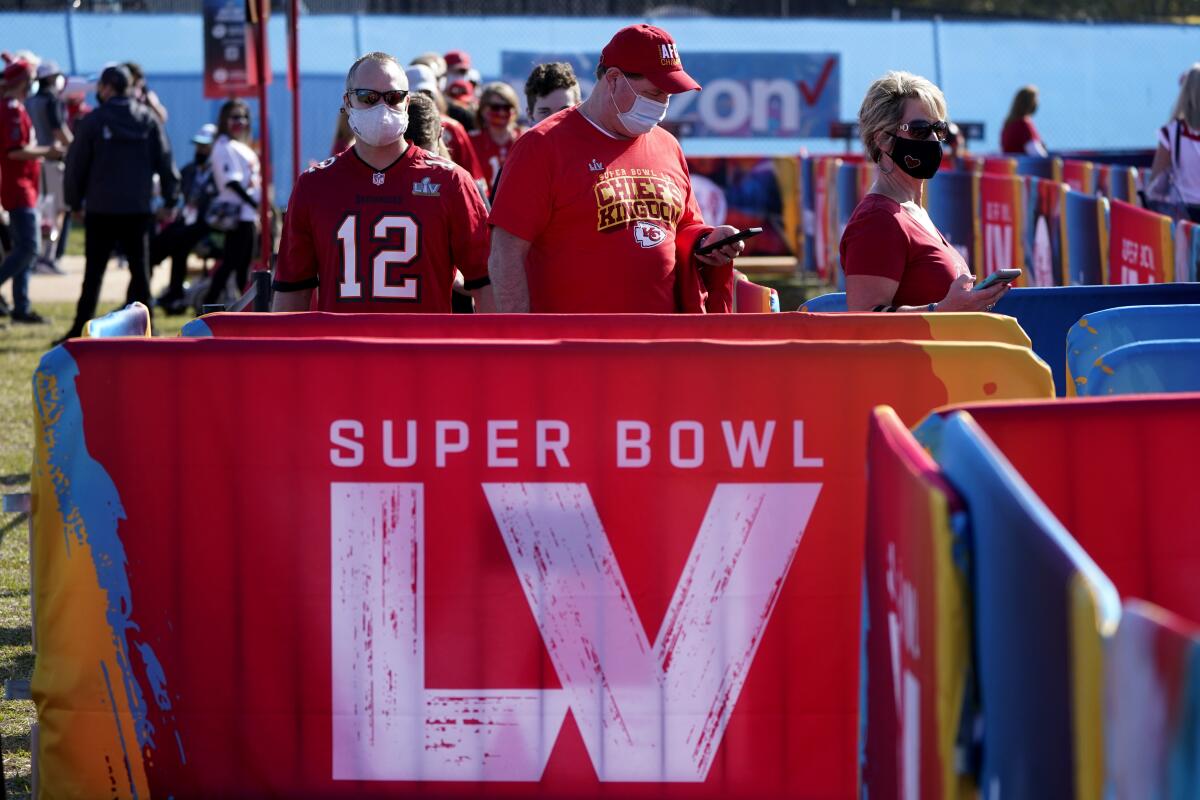
The league established strict testing and contact tracing among players and team staff, keeping in-house infection rates relatively low. But when it came to fans, each franchise could set its own stadium policy in consultation with local public health authorities.
Twenty of the 32 teams settled on limited attendance, taking precautions that included augmented sanitation, fans seated in small clusters and social distancing throughout the venue.
The new study looked at 152 games with no fans and 117 games with crowds ranging from 748 to 31,700. Leal and colleagues from universities across the nation — including public health experts — gathered COVID-19 data from applicable counties at intervals of seven, 14 and 21 days following games.
The seven-day interval showed no significant differences, which wasn’t surprising given the coronavirus’ incubation period at the time. After two and three weeks, however, the games with 20,000-plus attendance were associated with 2.23 times the rate of spikes, the study said.
Another study, led by researchers at MIT, used different methodology and suggested that opening stadiums had no impact on community spread.
“With the expert guidance of local, state and federal public health officials, including the CDC, we hosted fans safely and responsibly during the 2020 NFL season,” the league said in a statement. “Those same experts and an independent group of researchers at MIT have told us our approach worked: there were no local clusters of COVID cases traced to our games.”
A Stanford study of 18 Trump rallies held in the midst of the pandemic suggests they’ve led to more than 30,000 coronavirus infections and at least 700 COVID-19 deaths.
Authors of the more recently published research were careful to state they could not assess cause and effect because they had not confirmed transmission as directly linked to fan attendance. The data may also have been influenced by overall public health regulations in each of the observed counties.
“What we did find was an association,” Leal said. “We feel that we presented quite strong evidence for the higher risk of spikes for COVID-19.”
The 2020-21 season ended with a Super Bowl where 24,000 people, including vaccinated healthcare workers, sat in predetermined seats amid thousands of cardboard cutouts. By then, the league had lost an estimated $4 billion in attendance-related revenue.
The following September, a new season began with 65,566 fans gathering to watch the Buccaneers face the Cowboys in Tampa despite rising numbers due to the Delta variant. As one fan told The Times: “We got deprived last year … it’s a lot of pent-up emotion and fervor and all that.”
Leal and her colleagues said their data call for a more thoughtful perspective.
“This study highlights the importance of a holistic approach to reopening and managing public events during a disease outbreak when vaccines and rapid testing are not readily available,” they wrote. “Several lessons from the last [two] years can be applied to how we continue our response to variants of COVID-19 and prepare for the next threat — because there will be another.”
More to Read
Go beyond the scoreboard
Get the latest on L.A.'s teams in the daily Sports Report newsletter.
You may occasionally receive promotional content from the Los Angeles Times.

